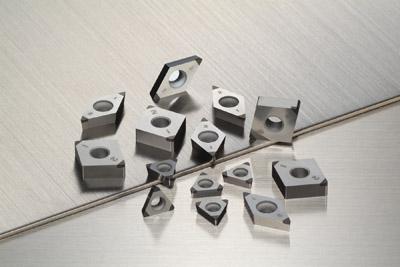
Sumitomo Electric Carbide Inc. has introduced the uncoated BN7500 CBN Grade for high precision and high efficiency machining of powdered metal.
The BN7500 offers a wide range of edge preparations for machining sintered alloys of any hardness. This grade also provides multi-tip inserts for a more cost effective solution.
The BN7500 offers machining stability through five edge preparations. Each edge preparation serves a significant purpose and advantage for usage in many different applications. Along with the standard edge preparation, the BN7500 is available in LF (burr control), LE and LS (surface roughness), and HS (breakage control) for interrupted cutting.
The BN7500 is ideal for use in industries such as automotive and agriculture.
Contact Details
Related Glossary Terms
- alloys
alloys
Substances having metallic properties and being composed of two or more chemical elements of which at least one is a metal.
- cubic boron nitride ( CBN)
cubic boron nitride ( CBN)
Crystal manufactured from boron nitride under high pressure and temperature. Used to cut hard-to-machine ferrous and nickel-base materials up to 70 HRC. Second hardest material after diamond. See superabrasive tools.
- edge preparation
edge preparation
Conditioning of the cutting edge, such as a honing or chamfering, to make it stronger and less susceptible to chipping. A chamfer is a bevel on the tool’s cutting edge; the angle is measured from the cutting face downward and generally varies from 25° to 45°. Honing is the process of rounding or blunting the cutting edge with abrasives, either manually or mechanically.
- hardness
hardness
Hardness is a measure of the resistance of a material to surface indentation or abrasion. There is no absolute scale for hardness. In order to express hardness quantitatively, each type of test has its own scale, which defines hardness. Indentation hardness obtained through static methods is measured by Brinell, Rockwell, Vickers and Knoop tests. Hardness without indentation is measured by a dynamic method, known as the Scleroscope test.
